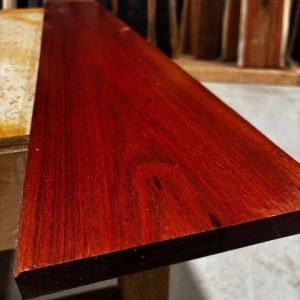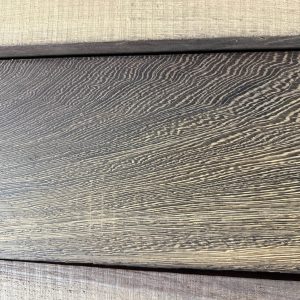Find Your Perfect Wood Product
If you find a product you like, reach out to us for more details and assistance.
Spanish Cedar
Spanish Cedar is not a true Cedar. It is actually closer to a Mahogany. Its color can range from light brown to a pinkish/red brown. Spanish Cedar has a moderate rot resistance in old growth trees. Allergies are uncommon but, some people have reported respiratory problems. Spanish Cedar is quite easy to work with when you have sharp tools though some sanding may still be necessary.
Length: 7′
Thickness: 4/4 $11.00/Bd ft
- Common Name(s): Spanish Cedar
- Scientific Name: Cedrela odorata
- Distribution: Central and South America, and the Caribbean
- Tree Size: 65-100 ft (20-30 m) tall, 3-5 ft (1-1.5 m) trunk diameter
- Average Dried Weight: 30 lbs/ft³ (480 kg/m³)
- Janka Hardness: 600 lbf (2,670 N)
- Crushing Strength: 5,280 lbf/in² (36.4 MPa)
Heartwood: Light to medium reddish-brown, sometimes with a purplish hue.
Sapwood: Pale yellow, clearly demarcated from heartwood.
Grain: Straight to interlocked.
Texture: Medium to coarse with a good natural luster.
Rated as moderately durable, resistant to termite attack, but vulnerable to other insects.
Spanish Cedar is easy to work with both hand and machine tools. It has a moderate blunting effect on cutters. It turns, glues, and finishes well, and is known for its pleasant, spicy scent.
- Furniture
- Veneer
- Cigar boxes and humidors
- Musical instruments
- Boatbuilding
- Specialty wood items







Spanish Cedar is valued for its light weight, workability, and aromatic qualities. It is often used in applications where its resistance to decay and pleasant smell are desirable. The wood’s natural oils make it a popular choice for cigar humidors and musical instruments.
Note: Spanish Cedar is not a true cedar (genus Cedrus) but belongs to the Meliaceae family, which includes mahoganies.